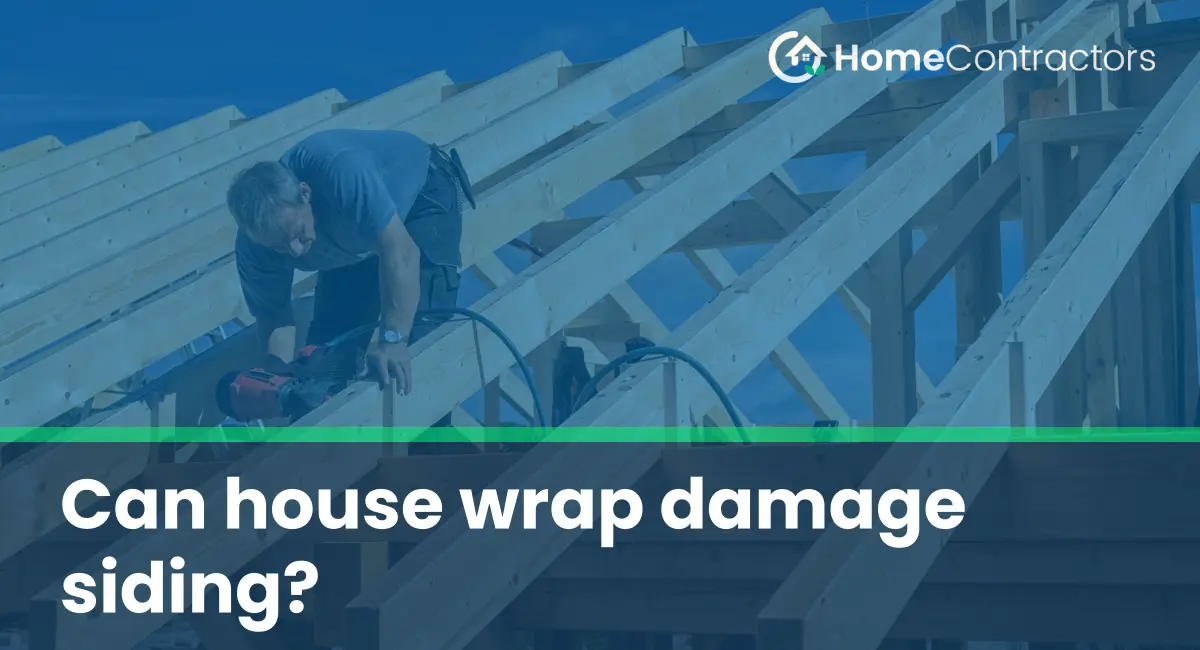When it comes to constructing or renovating a building, one important consideration is the use of house wrap. House wrap is a waterproof material installed beneath the siding of a house to provide an additional layer of protection against moisture and air infiltration. However, some homeowners may wonder if house wrap can potentially damage their siding. In this article, we will explore the benefits of using house wrap, potential issues that may arise, and how to prevent any damage to your siding in the process.
Understanding House Wrap:
House wrap, also known as weather-resistant barrier (WRB), is a synthetic material that allows vapors to escape while preventing water from entering the walls of a building. Its primary purpose is to act as a weatherproofing barrier, keeping the structure dry and minimizing the risk of mold and rot. House wrap usually consists of a spun-bonded polyethylene fabric that is lightweight, flexible, and easy to install.
The Benefits of House Wrap:
- Water Resistance: House wrap acts as an additional layer of protection against moisture infiltration. By preventing water from seeping through the external siding, it helps maintain the structural integrity of the building and protects against water-related damage, such as rot and mold growth.
- Energy Efficiency: House wrap also contributes to the energy efficiency of a building. It reduces the amount of air infiltration, minimizing drafts and heat loss in the winter, as well as blocking hot air from entering during the summer. This can lead to lower energy bills and a more comfortable living environment.
- Air Barrier: In addition to being a water barrier, house wrap functions as an air barrier as well. It helps to seal gaps and cracks in the building envelope, preventing air leakage and improving the overall airtightness of the structure. This enhances indoor air quality and increases the effectiveness of HVAC systems.
Potential Issues and Concerns:
While house wrap offers numerous benefits, incorrect installation or improper selection of materials can potentially cause damage to the siding. It is essential for homeowners and contractors to be aware of these concerns to ensure a successful construction or renovation project.
- Trapped Moisture: If not properly taped or sealed, house wrap may create a barrier that can trap moisture against the backside of the siding. This can lead to moisture-related issues, such as wood rot, mold, or paint deterioration. It is crucial to follow the manufacturer’s instructions and ensure proper installation to prevent this problem.
- Punctures and Tears: During the installation process, house wrap can be susceptible to punctures or tears caused by nails, staples, or other sharp objects. Although these imperfections may seem minor, they can compromise the water and air resistance of the house wrap, allowing moisture and air infiltration, which can damage the siding and reduce energy efficiency.
Preventing Damage to Siding:
To avoid any potential damage to the siding caused by house wrap, homeowners and contractors should follow these guidelines:
- Proper Installation: Carefully read and follow the manufacturer’s instructions for installing the house wrap. Ensure that it is correctly taped or sealed at all joints and penetrations to prevent moisture intrusion.
- Choose High-Quality Products: Invest in high-quality house wrap that is specifically designed for the intended application. Inferior products may be more prone to tearing or punctures, increasing the risk of damage to the siding.
- Inspect for Damage: Before proceeding with the installation of the siding, thoroughly inspect the house wrap for any punctures, tears, or signs of moisture accumulation. Repair or replace any damaged areas before proceeding.
- Professional Assistance: If unsure about the proper installation techniques or concerned about potential damage, seek the assistance of a professional contractor or consultant. They can offer expert guidance and ensure a successful installation.
House wrap offers numerous benefits, including increased water resistance, enhanced energy efficiency, and improved air quality. While it is designed to protect the siding and the structure from moisture-related issues, poor installation or low-quality materials can potentially damage the siding. By following proper installation techniques, choosing high-quality products, and conducting thorough inspections, homeowners can ensure the successful implementation of house wrap without causing any harm to their siding.
